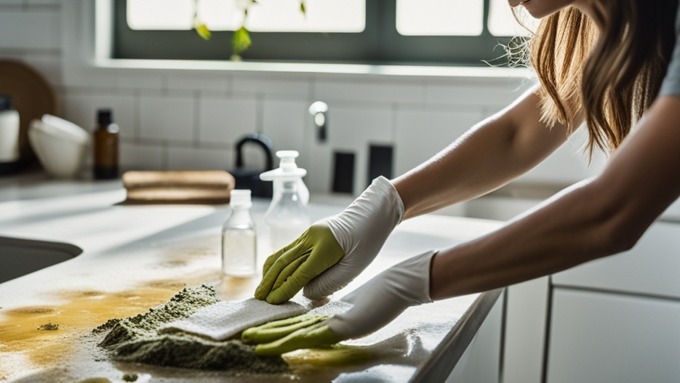Mildew vs Mold
Mildew
Mildew is a type of mold that often appears as a thin, powdery, or downy substance on the surface of materials such as fabric, paper, plants, and walls. It typically has a white, gray, or light yellow color. Mildew thrives in warm, moist environments and is often found in bathrooms, basements, and other areas with poor ventilation. The primary cause of mildew is excessive moisture combined with organic matter. It can grow on surfaces that have not been properly dried, leading to an unpleasant musty odor. Mildew can also develop on clothing or other stored items if they are not completely dry before being stored. Exposure to mildew can cause allergic reactions, respiratory problems, and skin irritations in certain individuals. It can also damage materials, including clothing, upholstery, and wallpaper. Regular cleaning and reducing moisture levels are essential in preventing mildew growth.Mold
Mold is a broader term that encompasses many species of fungi. Unlike mildew, mold can appear in a variety of colors, including black, green, brown, and blue. It usually has a fuzzy or slimy texture and may have a musty or earthy odor. Similar to mildew, mold requires high moisture levels to grow and thrive. It can be found on surfaces such as wood, drywall, carpet, and ceiling tiles. Mold spores are airborne and can spread easily, making it necessary to address mold infestations promptly. Exposure to mold can cause allergic reactions, respiratory issues, eye irritation, coughing, and sneezing. People with weakened immune systems or existing respiratory conditions are more susceptible to mold-related health problems. Additionally, mold can cause structural damage to buildings if left untreated.Differentiating Mildew from Mold
Although mildew and mold share similarities, there are a few key differences that can help differentiate between the two:- Appearance: Mildew typically appears as a powdery substance, while mold has a fuzzy or slimy texture.
- Color: Mildew is usually white, gray, or light yellow, while mold comes in various colors, including black, green, brown, and blue.
- Location: Mildew is commonly found on the surface of materials, whereas mold can penetrate deep into porous surfaces.
- Growth speed: Mildew grows relatively quickly, while mold can take longer to establish and spread.
Prevention and Remediation
Preventing the growth of mildew and mold is essential in maintaining a healthy living environment. Here are some preventative measures and remediation options:- Keep indoor humidity levels below 50% to inhibit fungal growth.
- Ensure adequate ventilation, especially in areas prone to dampness, like bathrooms and basements.
- Fix any leaks or water damage promptly.
- Clean and dry any affected areas thoroughly.
- Use mold-resistant products and materials, if possible.
- Consult professionals for extensive mold infestations or if you have health concerns.
Related Posts
 Mold Inspection
Mold Inspection
 How to Get Rid of Mold
How to Get Rid of Mold
 Effective, Efficient, Keeps Your Home Safe. Welcome to Authority Mold Removal. We are nationwide mold remediation experts. Call us today with your questions so you can make your home safe again.
Effective, Efficient, Keeps Your Home Safe. Welcome to Authority Mold Removal. We are nationwide mold remediation experts. Call us today with your questions so you can make your home safe again.Useful Links
Contact Info
24-Hour Service 646-389-9595admin@authoritymoldremoval.com
277 Park Ave, New York, USA